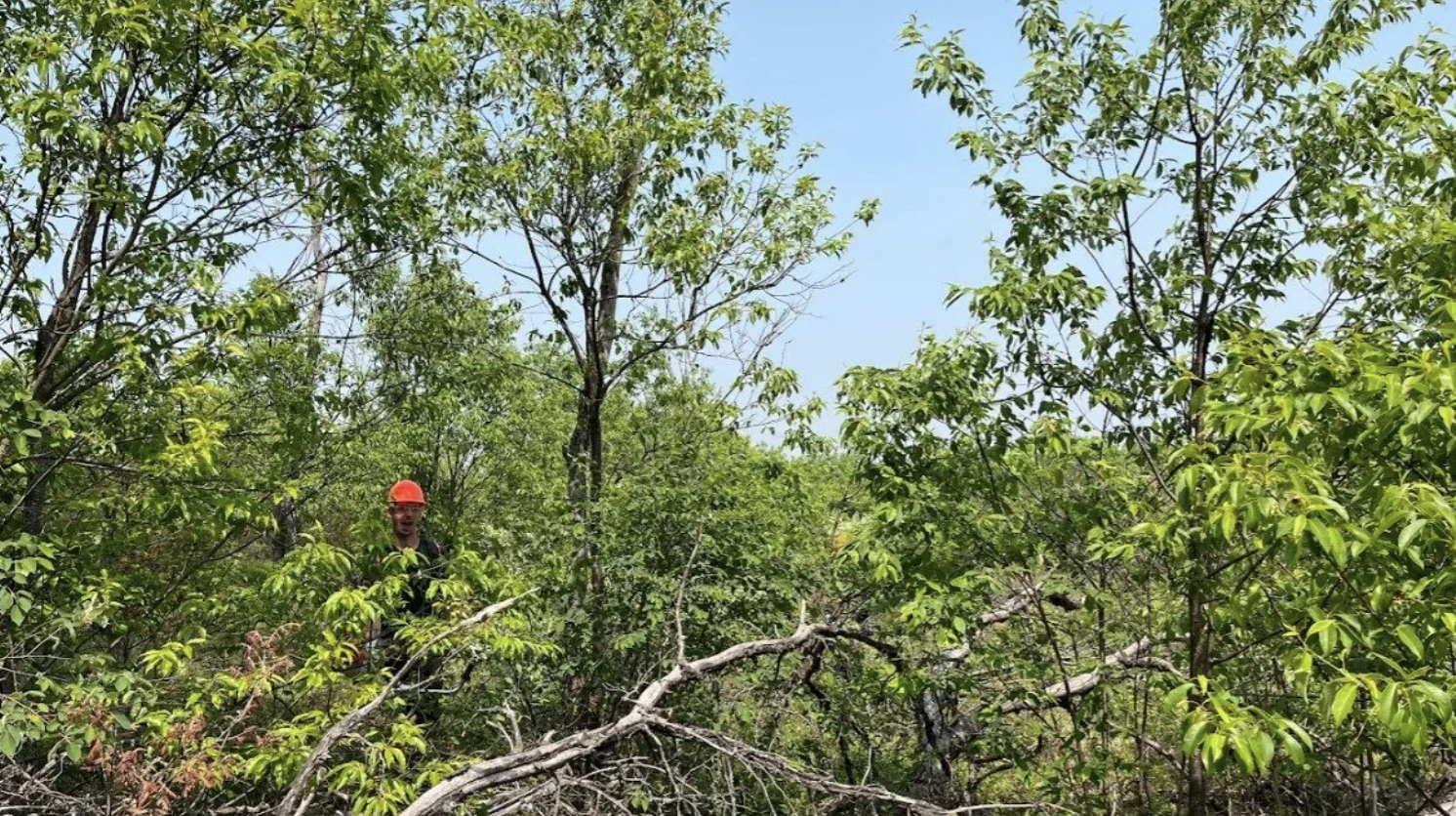Conserving Rare Species in Michigan’s Frost Pocket
A view looking east over the jack pine prairie of the Frost Pocket.
Our Stewardship Crew spent the first part of the summer field season restoring habitat for rare plants at a place deep in the heart of Oscoda County known as the “Frost Pocket.”
This region was one of the last to thaw at the end of Michigan’s Ice Age some 10,000 years ago. As the glaciers receded, rivers of meltwater scoured the earth and formed hills, kettles and vast plateaus of sandy soil. The dry sand prairie landscape of the Frost Pocket is defined by grasses, wildflowers and shrubs which thrive in an ecosystem where frequent fire and the absence of water keep the land mostly open.
For millennia, this landscape was maintained through wildfire, sparked naturally by lightning or set intentionally by Indigenous land stewards. Due to fire suppression efforts of the recent past, some of the prairie has grown up with trees and invasive species which crowd out important native plants historically found here.
Charred remnants of a past fire on the prairie.
Among them is the Allegheny plum, a low-growing shrub which produces small, fleshy fruits that are a crucial food source for birds and mammals. It is a species of special concern in Michigan and occurs sparsely around the Lower Peninsula. The population of Allegheny plum found at the Frost Pocket is an older, larger patch, making it a priority for Huron Pines to conserve.
READ MORE: Prunus umbellata, Michigan Natural Features Inventory (MNFI)
This summer, members of our seasonal Heartland Restoration Team used brush cutters to clear away small trees like black cherry, chokecherry, oak and invasive Siberian crabapple, opening up the canopy for Allegheny plum to flourish. Small amounts of herbicide are applied to the cut stumps to prevent resprouting and ensure long term benefit for the plum patch.
Restoration Technician Daniel Judd cuts black cherry trees, clearing space for Allegheny plum to grow.
Don’t let its name fool you — the Frost Pocket is a hot and dry place. Hiking here can sound like stepping on potato chips, especially during times of intense drought as Northern Michigan experienced earlier this summer.
Even so, the Frost Pocket is a place teeming with life adapted to an arid landscape. As they worked, our crew had the opportunity to see other rare and unique species which share this region made famous by the Kirtland’s warbler, including wildflowers like pale agoseris, blazing star and Hill’s thistle, whitetail fawns, bald eagles and a Say’s cicada.
A bald eagle perches on a dead tree in the smoky haze.
This project is part of a larger landscape-scale restoration Huron Pines is engaging in alongside our partner organizations to conserve and restore 2,500 acres of pine barrens and sand prairies in the jack pine ecosystem.
READ MORE: Building on Warbler Success for Landscape-Scale Restoration
“These habitats have been reduced to less than one percent of their historic extent,” said Steve Woods, Conservation Stewardship Director for Huron Pines. “Restoring the landscape is what brought back the Kirtland’s warbler population and, now that they’re delisted, we have an opportunity to focus on the broader ecosystem and all the species that share it.”
Through this partnership, Huron Pines is working with resource professionals at the U.S. Fish & Wildlife Service, U.S. Forest Service, Michigan Department of Natural Resources and Camp Grayling on coordinating habitat restoration efforts across the lands these agencies own and manage. Other partners include American Bird Conservancy, HeadWaters Land Conservancy and the Kirtland’s Warbler Conservation Team. It is supported in part by the Great Lakes Restoration Initiative, the U.S. Fish & Wildlife Service and the Michigan Department of Natural Resources’ Wildlife Habitat Grant Program.
Restoration Technicians Daniel Judd, Christina Andrews and Kathryn Heckman (l-r) snap a selfie while gearing up for a day of field work on the Mio Plateau.
This partnership is an opportunity to use a variety of techniques, including prescribed fire, to promote species diversity, suppress invasive plants and improve the outcomes for all species which reside there. Additionally, Huron Pines’ budding Native Seed Program, which utilizes locally collected seed to expand populations native grasses and wildflowers, will also play a role in this work.
If you are interested in assisting Huron Pines in these efforts by volunteering to collect native seed, email Maddie Khuri, Community Education Project Manager, at maddie@huronpines.org.





